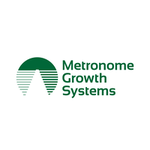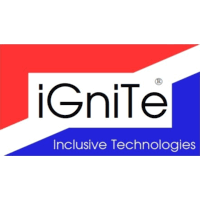Description

Metronome Growth Systems

Snapforce Business Management
Comprehensive Overview: Metronome Growth Systems vs Snapforce Business Management
Metronome Growth Systems
a) Primary Functions and Target Markets
Metronome Growth Systems is a strategic business management software platform designed to aid companies in executing their business strategies and achieving growth. Its primary functions include:
- Strategic Planning: Offers tools for goal-setting, performance tracking, and strategic execution.
- Performance Management: Includes features for KPI tracking, dashboard management, and real-time analytics.
- Collaboration: Provides team collaboration tools that support alignment and accountability across teams.
- Coaching and Development: Facilitates leadership coaching and employee development through integrated frameworks.
Target Market: Metronome Growth Systems primarily targets mid-size to large enterprises looking for comprehensive strategic planning and execution tools. It is particularly appealing to companies employing business operating systems like OKRs or the Rockefeller Habits.
b) Market Share and User Base
Metronome Growth Systems enjoys a niche presence in the market, focusing on companies deeply invested in structured business management practices. While it might not have as broad a market share as some general business management tools, its specialized nature endears it to a loyal user base in its target market.
c) Key Differentiating Factors
- Focused on Strategic Execution: Unlike many business management tools that offer a broad suite of services, Metronome Growth Systems specializes in strategic planning and execution.
- Business Framework Integration: It integrates established business methodologies, making it attractive to organizations committed to disciplined strategy practices.
- Coaching and Development Features: An emphasis on leadership and employee development distinguishes it from more operationally-focused platforms.
Snapforce Business Management
a) Primary Functions and Target Markets
Snapforce is a business management software that provides a suite of CRM and business management tools. Its primary functions include:
- Customer Relationship Management (CRM): Features for sales automation, customer service, and contact management.
- Office Management: Tools for collaboration, document management, and email integration.
- Telephony Integration: Unique integration with telephony services allows for enhanced communication management.
- Sales and Marketing Automation: Provides tools for marketing campaigns, sales tracking, and reporting.
Target Market: Snapforce targets small to medium-sized businesses (SMBs) looking for an integrated CRM and business management solution. Its affordability and feature set make it appealing to businesses seeking comprehensive yet cost-effective solutions.
b) Market Share and User Base
Snapforce has a solid presence in the SMB market primarily due to its comprehensive and affordable nature. It attracts businesses that may outgrow basic CRM solutions like those offered by HubSpot or Salesforce's entry-level products but are not ready to invest in high-end, enterprise-level systems.
c) Key Differentiating Factors
- Telephony Integration: Snapforce stands out with its built-in telephony features, an asset for businesses that rely heavily on phone-based customer service.
- Affordability: Designed to be a cost-effective solution for SMBs, it offers a robust set of features at competitive pricing.
- Comprehensive CRM and Office Management: Combines CRM with essential office management tools, offering a broader feature set than many CRM-focused products.
Comparison Overview
In terms of comparison, Metronome Growth Systems and Snapforce target different market segments, even though both operate within the business management sphere. Metronome focuses on strategic planning and execution for larger organizations while Snapforce offers a wider range of operational business management tools catered to smaller businesses. Each product’s differentiators—integration capabilities and market focus—are shaped by their respective target markets, making them suited for different business needs and scales.
Contact Info

Year founded :
Not Available
Not Available
Not Available
Not Available
Not Available

Year founded :
Not Available
Not Available
Not Available
Not Available
Not Available
Feature Similarity Breakdown: Metronome Growth Systems, Snapforce Business Management
To provide a feature similarity breakdown for Metronome Growth Systems and Snapforce Business Management, we'll conduct a high-level comparison of their common core features, user interface (UI) evaluation, and any unique features. Keep in mind that specific software packages may evolve over time, and exact feature sets can vary based on product versions and customer customization.
a) Core Features in Common
-
Customer Relationship Management (CRM):
- Both systems offer CRM capabilities, allowing users to manage customer interactions and data effectively.
-
Sales and Pipeline Management:
- Both platforms support sales tracking, pipeline management, and lead nurturing functionalities.
-
Analytics and Reporting:
- Each provides tools for generating reports and insights, enabling businesses to make data-driven decisions.
-
Task and Workflow Automation:
- They offer automation features to streamline processes and enhance productivity.
-
Contact Management:
- Metronome and Snapforce both facilitate storing and managing contact information in a centralized database.
b) Comparison of User Interfaces
-
User-Friendliness:
- Both Metronome Growth Systems and Snapforce are designed to be user-friendly, but the simplicity and intuitiveness of the interface may vary depending on updates and customization options.
-
Design Aesthetic:
- The UI design for both platforms typically follows modern business software trends, with a focus on ease of use, although specific feedback from individual users may highlight preferences for one over the other.
-
Customization Options:
- Each product allows some degree of UI customization to tailor the experience to specific business needs, though the exact customization capabilities can differ.
c) Unique Features
-
Metronome Growth Systems:
- Strategic Planning Tools: Metronome Growth Systems is particularly strong in offering strategic planning and execution tools, such as meeting rhythms and goal-setting functionalities, which support business scaling efforts.
- Growth Framework Integration: It often integrates frameworks for business growth management, which may not be as emphasized in general business management software.
-
Snapforce Business Management:
- Integrated Telephony: Snapforce may offer integrated telephony features, like call management and logging, which can be valuable for businesses that rely heavily on telecommunication.
- Industry-Specific Solutions: It often offers industry-specific modules and features tailored to specific business verticals, extending beyond generic business management functionalities.
In summary, while Metronome Growth Systems and Snapforce Business Management share many core features essential for managing business processes, each platform has distinct strengths—Metronome in strategic planning and growth framework support, and Snapforce in integrated telephony and industry-specific solutions. The choice between them would likely depend on the specific strategic needs and operational priorities of a business.
Features

Goal Setting and Tracking
Team Collaboration
User Management
Strategic Planning
Performance Analytics

Customer Relationship Management (CRM)
Project Management
Financial Management
Customer Support
Best Fit Use Cases: Metronome Growth Systems, Snapforce Business Management
Metronome Growth Systems and Snapforce Business Management serve different purposes and cater to distinct types of businesses, projects, and industry needs. Here's a breakdown of their best fit use cases:
a) Metronome Growth Systems
Types of Businesses or Projects:
- Strategic Planning and Execution: Metronome Growth Systems is ideal for organizations focused on strategic planning and execution, particularly those that utilize frameworks like the Rockefeller Habits or the Scaling Up methodology.
- Growth-Oriented Companies: Businesses aiming for growth and scaling might find Metronome's tools beneficial for maintaining strategic alignment and visibility across teams.
- C-Suite and Leadership Teams: Companies where leadership teams need to synchronize their strategic initiatives and ensure company-wide alignment would benefit.
- Mid to Large Enterprises: Typically larger organizations with complex structures that require integrated strategic planning tools to drive performance.
Use Cases:
- Setting and tracking organizational goals.
- Aligning teams around company values and strategic priorities.
- Monitoring key performance indicators (KPIs) and critical numbers.
b) Snapforce Business Management
Scenarios for Preference:
- Comprehensive CRM Needs: Snapforce is particularly useful for businesses in need of a robust Customer Relationship Management (CRM) solution that integrates seamlessly with their business processes.
- Small to Medium Enterprises (SMEs): SME’s looking for an integrated business management suite that includes CRM, customer support, telephony, and project management features.
- Budget-Conscious Businesses: Companies that require affordable, scalable management software without the need for heavy customization.
- Service-Oriented and Customer-Facing Businesses: Organizations that rely heavily on customer interactions, sales processes, and customer support, such as retail, hospitality, and financial services.
Use Cases:
- Managing customer relationships and sales pipelines.
- Integrating telephony with CRM for better customer service.
- Handling project management within a unified system.
c) Industry Verticals or Company Sizes
Metronome Growth Systems:
- Industries: Professional services, technology companies, and industries focusing on strategic growth initiatives.
- Company Sizes: Best suited for mid-sized to large enterprises where complex strategic planning and cross-departmental alignment are required.
Snapforce Business Management:
- Industries: Useful across a wide range of industries, particularly those that are customer-centric like retail, financial services, and consulting.
- Company Sizes: Effective for small to medium-sized businesses that need a comprehensive, easy-to-implement CRM and business management solution.
Both products cater to different needs and organizational scales, emphasizing strategic alignment for larger enterprises in the case of Metronome Growth Systems, and integrated customer and business management for SMEs when considering Snapforce Business Management.
Pricing

Pricing Not Available

Pricing Not Available
Metrics History
Metrics History
Comparing undefined across companies
Conclusion & Final Verdict: Metronome Growth Systems vs Snapforce Business Management
To provide a comprehensive conclusion and final verdict for Metronome Growth Systems and Snapforce Business Management, let's evaluate each product based on various factors like features, usability, pricing, customer support, and scalability.
a) Best Overall Value
Metronome Growth Systems generally offers robust strategic management and growth-focused tools. It is particularly suited for organizations seeking to implement OKRs (Objectives and Key Results) and other performance management frameworks. It shines in providing a structure for long-term planning and strategic execution.
Snapforce Business Management, on the other hand, offers a comprehensive suite of business management solutions, including CRM, project management, and customer service. It is typically more versatile for small to medium-sized enterprises looking for a unified system to manage various business functions.
Best Overall Value: The best value depends on what an organization prioritizes. If the primary need is executing strategic objectives and aligning teams towards long-term goals, Metronome Growth Systems has the edge. However, for broader business management functionalities and CRM capabilities in one suite, Snapforce Business Management may offer better value.
b) Pros and Cons
Metronome Growth Systems
-
Pros:
- Focused on strategic planning and growth.
- Strong tools for implementing OKRs and performance management.
- Encourages alignment of organizational objectives.
-
Cons:
- May not provide comprehensive business management features.
- Potentially higher learning curve for users unfamiliar with strategic frameworks.
- Limited CRM functionalities compared to Snapforce.
Snapforce Business Management
-
Pros:
- All-in-one solution covering CRM, project management, and customer service.
- User-friendly interface with integrated functionalities.
- Suitable for small to mid-sized businesses needing varied capabilities.
-
Cons:
- Might lack depth in strategic growth tools if that is a primary need.
- Can be overwhelming if users only need specific functionalities like CRM.
- Potential for higher costs if scaled up extensively.
c) Recommendations
-
Define Organizational Needs: Users should clearly delineate their core needs. Those focused strictly on organizational growth and strategic performance management should lean towards Metronome Growth Systems, whereas businesses needing a wider array of management tools might prefer Snapforce.
-
Evaluate Scalability and Integrations: Consider future growth and workflow integrations. Companies anticipating extensive scaling and requiring integration with existing systems should weigh each platform's scalability and compatibility with third-party applications.
-
Test Demos and Trials: Both options should be tested via demos or trials to assess ease of use and suitability. Hands-on experience will help determine which platform aligns better with day-to-day operations.
-
Budget Considerations: Align the choice with budget constraints while considering the potential ROI each system can offer based on operational needs.
The final decision would benefit from thorough assessment and alignment with specific organizational goals.
Add to compare
Add similar companies



